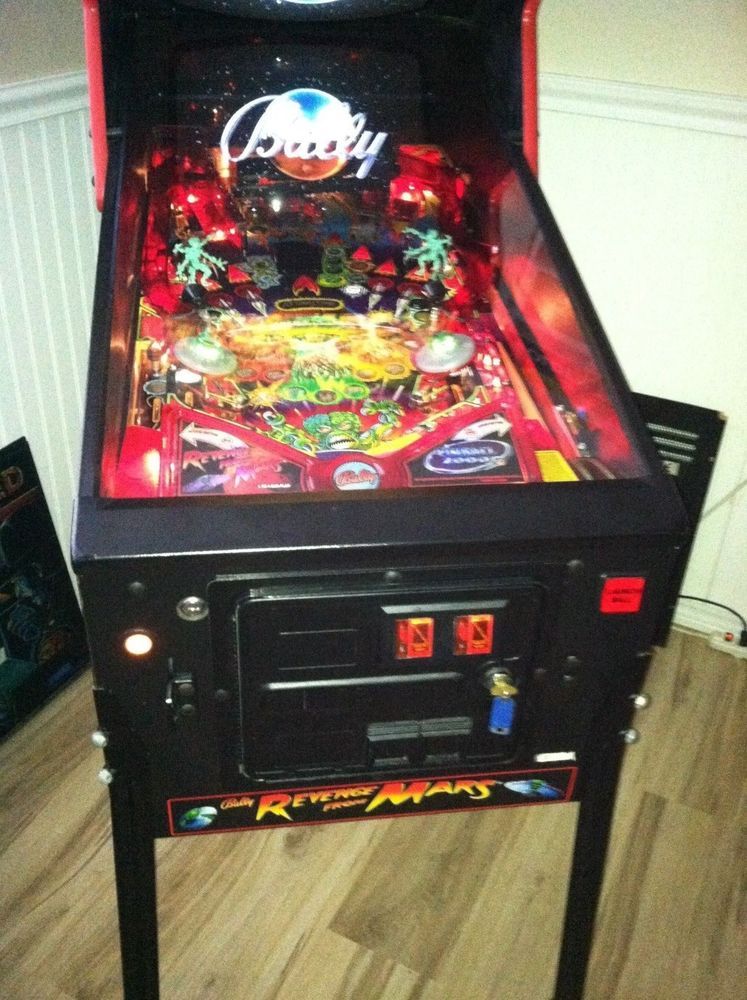
Bagatelle is where we first start seeing a game resembling pinball start to form. It was a game where the object was to launch a ball into a board full of pins in an attempt to land the ball in various holes or pockets. The goals and layouts all varied but the mode of play was all the same. The problem with this is that there is very little input the player has on the ball, meaning it is more of a game of chance than it is a game of skill which after a while left players desiring more, which is where flippers came into play. What I find particularly interesting about Bagatelle is that it’s the genesis of what modern pin related games would later become. After Bagatelle we see a split into different games such as pinball and pachinko, two very different games that share a common ancestor.

Pinball related games may have started out as games of chance early on, but as soon as flippers were introduced and perfected, it quickly became a game of skill. However many did not see it this way and considered it gambling which had disastrous repercussions for the industry. Many games had to have variations where a player being rewarded a “free game” is replaced with the “add a ball” feature which functionally acts very similar but without the risk of being called gambling. In some locations, pinball was outright banned with many famous images of police going out and smashing pinball machines in the street. It wasn’t until 1974 that the ban of pinball machines was finally lifted following a court case where the California Supreme Court ruled that pinball was a game of skill as opposed to a game of chance. This was done due to the contribution of Roger Sharpe playing in the courtroom to demonstrate how much control he had over the game. I found this interesting just because it’s always ironic to see how the next big thing will always be surrounded with the controversy of “corrupting the youth” etc. and how things got so bad that many images of police smashing pinball machines exist from that time. I also find the fact that the case was solved by someone bringing a pinball machine into court and playing it very humorous.

The last thing I want to write about was the Pinball 2000 fiasco that both saved and killed pinball at the same time. In the late 90’s pinball sales where at an all-time low due to the popularity and convenience of other media like video games at the time. This left many companies to dropping out of the business completely, leaving only two companies left, Williams and Sega. Williams was definitely the innovator of the two and management decided that something big needed to change or else they would drop out too. That’s where the idea of Pinball 2000 came from; looking at the success of video games, the designers at Williams deciding that pinball needed to evolve to remains competitive, and this involved merging the two media together. The original design just involved having the backboard replaced with a monitor, but this was destined to fail and the senior designers knew this. They refined the design to use the reflection of the glass to reflect images onto the playfield itself in order to truly merge the two media into one cohesive experience. The first game to do this was Revenge From Mars, a sequel to an earlier successful pinball machine. This was considered a great success, allowing Williams to make a profit for the first time in several years, and work was immediately started on the second in the series: Star Wars Episode 1: The Phantom Menace.

This is where troubles start to arise. Due to the movie being in production at the same time, the designers had to sign a strict NDA which meant that consulting with the other designers and playtesting were difficult if not impossible. This led to an average to borderline boring experience which on top of the increased price causing many retailers to cancel their orders, as well as the movie itself performing subparly, caused a loss for Williams. This was the final straw for Williams as the pinball division was shutdown entirely after this. I found this interesting because the Pinball 2000 concept was shown to be a successful model, but the failure of only the second machine caused Williams to panic and jump ship which is unfortunate. However maybe it was for their best interest since they jumped over to the slot industry where they found much more success with far less risk. I’d find it interesting if the Pinball 2000 model gets resurrected with the resurgence of pinball interest in recent years. For such a unique concept, it’s a shame that only two machines were ever completed.
